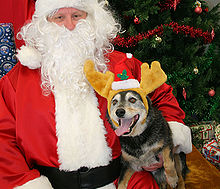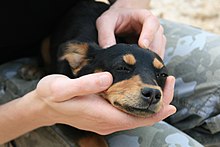NAMA :
VENEZIA AMANDA
NPM : 17211254
KELAS : 1EA16
TUGAS : SOFTSKILL BAHASA INGGRIS ( TUGAS 3)
Simple Perfect Articles Verbal
and Non Verbal Tense
SCONES
Make
a holiday breakfast--or afternoon tea--really special with these sweet bakery
treats.
Sunday
morning. You've fetched (VERBAL SENTENCE) the newspaper and are
about to head for the bakery. Hold it right there. How about a warm scone from
your own oven? If you've got (VERBAL SENTENCE) the ingredients, it's
possible to have a batch ready to go into the oven about as quickly as most
people can get to the store and back.
Start
by preheating the oven. Meanwhile, measure the dry ingredients into a bowl, add
the butter, then your favorite dried fruit, and finally stir in the liquid
ingredients. That's it. The dough's ready to shape.
There
are several ways to incorporate butter into the dry ingredients for scones,
biscuits or pie dough -- fingertips, a pastry cutter, two knives or forks, or
the grating disk of a food processor. For a small batch of scones, I've found (VERBAL SENTENCE) grating frozen butter on a box grater is much easier than any
of those methods. For a larger batch, however, washing the food processor bowl
may be preferable to hand-grating several sticks of butter.
Make
sure the butter is frozen solid. Any softer and it will clog up the grater,
clump together and not mix well with the dry ingredients; plus, the scones
won't rise as high or be as flaky. Store some butter in the freezer so you
don't have to wait for it to chill the next time you want to make scones (or
biscuits or pie dough).
If
you're short on time in the morning, mix and freeze the dry ingredients (with
the incorporated butter) and refrigerate the egg-sour cream mixture the night
before. The next morning, simply mix, form, cut and bake.
To
keep the dough as cold as possible during mixing, stir it with a fork until
clumps form. At that point, switch to your hand, pressing the clumps together
and against the side of the bowl to form a ball. Because there's a minimum of
liquid in the recipe (so the scones rise up, not out, as they bake), you may be
tempted to add more, but don't. There should be enough liquid to bind the
dough. If any crumbs linger, flick a few drops of water onto them and use the
dough ball to pick them up.
No
need for a rolling pin. Just pat the ball into a disk, sprinkle it with a
little sugar for good looks, and cut it into wedges. You can double the recipe,
but divide the dough in half to pat out and cut. Otherwise you'll end up with a
big disk and long, skinny scones.
And
make sure to adjust the oven rack to the lower-middle position -- not the
bottom. The dough has enough (VERBAL SENTENCE) sugar that close
proximity to the heat could produce dark bottoms.
DOG
The domestic dog (Canis lupus familiaris), is
a subspecies of the gray wolf (Canis lupus), a member
of the Canidae family of the mammilian
order Carnivora. The term "domestic dog"
is generally used for both domesticated and feral varieties. The dog may have been the first (NON VERBAL
SENTECE) animal to be domesticated, and has been the most widely (NON VERBAL
SENTENCE) kept working, hunting, and companion animal in human
history. The word "dog" may also mean the male of a canine
species, as opposed to the word "bitch" for the female of the
species.
The present lineage of dogs was domesticated from gray wolves about 15,000
years ago. Remains of domesticated dogs have been found (NON VERBAL SENTENCE) in Siberia
and Belgium from about 33,000 years ago. None of these early domestication
lineages seem to have survived (VERBAL SENTENCE) the Last Glacial Maximum. Although mDNA suggest a split between dogs and
wolves around 100,000 years ago no specimens predate 33,000 years ago that are
clearly morphologically domesticated dog.
Dogs' value to early human hunter-gatherers led to them quickly becoming
ubiquitous across world cultures. Dogs perform many roles for people, such
as hunting, herding, pulling loads, protection, assisting police and military, companionship, and, more recently, aiding handicapped individuals. This impact on human society has
given (VERBAL
SENTENCE) them the nickname "Man's Best Friend" in the
Western world. In some cultures, dogs are also source of meat. In 2001,
there were estimated to be 400 million dogs in the world.[11]
Most breeds of dogs are at most a few hundred years old, have been
artificially (NON
VERBAL SENTENCE) selected for particular morphologies and behaviors by people for specific functional roles. Through
this selective breeding, the dog has developed (VERBAL SENTENCE) into hundreds
of varied breeds, and shows more behavioral and
morphological variation than any other land mammal. For example, height
measured to the withers ranges from a 2 inches
(51 mm) in theChihuahua to a 2 feet (0.61 m) in
the Irish Wolfhound; color varies from white through
grays (usually called "blue") to black, and browns from light (tan)
to dark ("red" or "chocolate") in a wide variation of
patterns; coats can be short or long,
coarse-haired to wool-like, straight, curly, or smooth. It is common for
most breeds to shed this coat.


History and
evolution
Ancient Greek rhyton in the shape of a dog's head, made by Brygos, early 5th century BC. Jérôme Carcopino Museum,
Department of Archaeology, Aleria
Domestic dogs inherited complex behaviors from their wolf ancestors, which
would have been pack (NON VERBAL
SENTENCE) hunters with complex body language. These sophisticated forms of social
cognition and communication may account for their trainability, playfulness,
and ability to fit into human households and social situations, and these
attributes have given dogs a relationship with humans that has enabled them to
become one of the most successful species on the planet today.
Although experts largely disagree over the details of dog domestication, it is agreed that human
interaction played a significant role in shaping the subspecies. Domestication
may have occurred (VERBAL SENTENCE) initially in separate areas
particularly Siberia and Europe. Currently it is thought domestication of our
current lineage of dog occurred sometime as early as 15,000 years ago and
arguably as late as 8500 years ago. Shortly after the latest domestication,
dogs became ubiquitous in human populations, and spread throughout the world.
Emigrants from Siberia likely crossed the Bering Strait with dogs in their company,
and some experts suggest the use of sled dogs may have been critical (NON VERBAL
SENTENCE) to the success of the waves that entered North America
roughly 12,000 years ago, although the earliest archaeological evidence of
dog-like canids in North America dates from about 9,000 years ago. Dogs were an
important part of life for the Athabascan population in North America, and were their only domesticated animal.
Dogs also carried much of the load in the migration of the Apache and Navajotribes 1,400 years ago. Use of dogs
as pack animals in these cultures often
persisted after the introduction of the horse to North America.
The current consensus among biologists and archaeologists is that the
dating of first domestication is indeterminate, although more recent
evidence shows isolated domestication events as early as 33,000 years ago. There
is conclusive evidence the present lineage of dogs genetically diverged from
their wolf ancestors at least 15,000 years ago, but some believe domestication
to have occurred (VERBAL SENTENCE) earlier. Evidence is
accruing that there were previous domestication events, but that those lineages
died out.
It is not known whether humans domesticated the wolf as such to initiate
dog's divergence from its ancestors, or whether dog's evolutionary path had
already taken a different course prior to domestication. For example, it is
hypothesized that some wolves gathered around the campsites of paleolithic
camps to scavenge refuse, and associated evolutionary pressure developed that
favored those who were less frightened by, and keener in approaching, humans.

Tesem, an old Egyptian sighthound-like dog.
The bulk of the scientific evidence for the evolution of the domestic dog
stems from morphological studies of archaeological findings and mitochondrial DNA studies. The divergence date
of roughly 15,000 years ago is based in part on archaeological evidence that
demonstrates the domestication of dogs occurred more than 15,000 years ago, and
some genetic evidence indicates the domestication of dogs from their wolf
ancestors began in the lateUpper Paleolithic close to the Pleistocene/Holocene boundary, between 17,000 and
14,000 years ago. But there is a wide range of other, contradictory findings
that make this issue controversial. There are findings beginning currently at
33,000 years ago distinctly placing them as domesticated dogs evidenced not
only by shortening of the muzzle but widening as well as crowding of teeth.
Archaeological evidence suggests the latest dogs could have diverged from
wolves was roughly 15,000 years ago, although it is possible they diverged much
earlier. In 2008, a team of international scientists released findings from an
excavation at Goyet Cave in Belgium declaring a large, toothy canine existed
31,700 years ago and ate a diet of horse, musk ox and reindeer.
Prior to this Belgian discovery, the earliest dog fossils were two large
skulls from Russia and a mandible from
Germany dated from roughly 14,000 years ago. Remains of smaller dogs from Natufian cave deposits in the Middle
East, including the earliest burial of a human being with a domestic dog, have
been dated (NON
VERBAL SENTENCE) to around 10,000 to 12,000 years ago. There is a
great deal of archaeological evidence for dogs throughout Europe and Asia
around this period and through the next two thousand years (roughly 8,000 to
10,000 years ago), with fossils uncovered in Germany, the French Alps, and
Iraq, and cave paintings in Turkey.[25]The oldest remains of a domesticated
dog in the Americas were found in Texas and have been dated (NON VERBAL
SENTENCE) to about 9,400 years ago.

DNA studies
DNA studies have provided (VERBAL SENTENCE) a wide range of possible
divergence dates, from 15,000 to 40,000 years ago, to as much as 100,000 to
140,000 years ago. These results depend on a number of
assumptions. Genetic studies are based on comparisons of genetic diversity between species, and depend on
a calibration date. Some estimates of divergence dates from DNA evidence use an
estimated wolf-coyote divergence date of roughly 700,000 years ago as a
calibration. If this estimate is incorrect, and the actual wolf-coyote
divergence is closer to one or two million years ago, or more, then the
DNA evidence that supports specific dog-wolf divergence dates would be
interpreted very differently.
Furthermore, it is believed the genetic diversity of wolves has been (NON VERBAL
SENTENCE) in decline for the last 200 years, and that the genetic
diversity of dogs has been reduced (NON VERBAL SENTENCE) by selective breeding. This could significantly bias DNA analyses to
support an earlier divergence date. The genetic evidence for the domestication
event occurring in East Asia is also subject to violations of assumptions.
These conclusions are based on the location of maximal genetic divergence, and assume hybridization does not occur, and that
breeds remain geographically localized. Although these assumptions hold for
many species, there is good reason to believe that they do not hold for
canines.

Genetic analyses indicate all dogs are likely descended from a handful of
domestication events with a small number of founding females, although there is
evidence domesticated dogsinterbred with local populations of wild wolves on several occasions. Data
suggest dogs first diverged from wolves in East Asia, and these domesticated
dogs then quickly migrated throughout the world, reaching the North American
continent around 8000 BC. The oldest groups of dogs, which show the greatest genetic variability and are the most similar to their wolf
ancestors, are primarily Asian and African breeds, including the Basenji, Lhasa Apso, and Siberian Husky. Some breeds thought to be very
old, such as the Pharaoh Hound, Ibizan Hound, and Norwegian Elkhound, are now known to have been created more recently.
There is a great deal of controversy surrounding the evolutionary framework
for the domestication of dogs. Although it is widely claimed that "man
domesticated the wolf," man may not have taken such a proactive role
in the process. The nature of the interaction between man and wolf that led to
domestication is unknown and controversial. At least three early species of
the Homogenus began spreading out of Africa roughly 400,000 years
ago, and thus lived for a considerable time in contact with canine species.

Despite this, there is no evidence of any adaptation of canine species to
the presence of the close relatives of modern man. If dogs were domesticated,
as believed, roughly 15,000 years ago, the event (or events) would have
coincided with a large expansion in human territory and the development of
agriculture. This has led some biologists to suggest one of the forces that led
to the domestication of dogs was a shift in human lifestyle in the form of
established human settlements. Permanent settlements would have coincided with
a greater amount of disposable food and would have created a barrier between
wild and anthropogenic canine populations.
